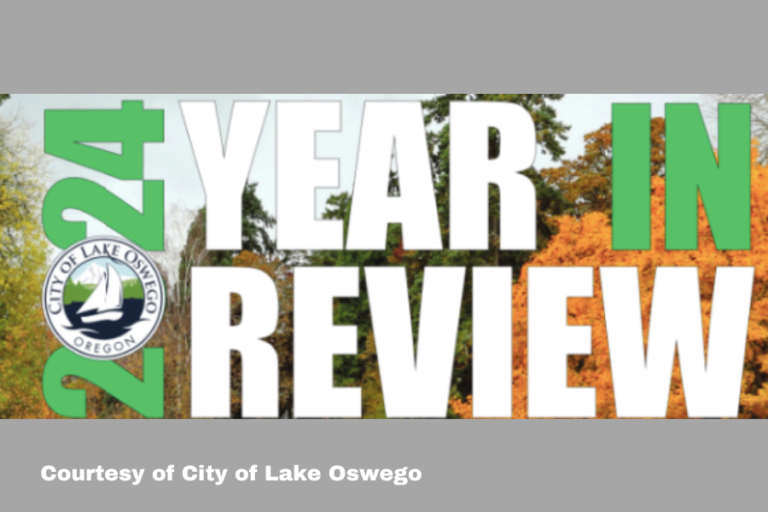The City of Lake Oswego 2024 Year in Review highlights key accomplishments and provides an overview of the City’s finances. The City Council remains committed to funding initiatives that support community priorities, ensuring Lake Oswego remains a safe, sustainable, and welcoming place. This progress is made possible by community engagement and the dedication of City staff.
Real-time financial data is available on the City’s online dashboard found here: link.
The Budget in Brief outlines the City’s financial plan, detailing how public programs and services are funded based on projected revenues and expenses. The 2023-25 Biennial Budget of $456,986,898 million maintains service levels and aligns with City Council goals. The budget is divided into various funds, including the General Fund, special revenue, debt service, enterprise, and capital projects. The City receives about 25% of local property taxes, estimating $89.5 million in revenue, with one-third allocated to Police, Parks, and Fire services.
What does it cost to run the City & how are those costs paid for?
$456,986,898 Total financial resources available for the City.
- Property taxes are the largest ongoing source for funding your city’s basic public services such as Police, Fire, Parks and Recreation, and Planning.
- Utility fees support the operations, maintenance, and capital projects for public water, sewer, stormwater, and street infrastructure.
- Ongoing and one-time revenue sources include franchise fees, internal charges for services, licenses, and intergovernmental revenues.
- Other funds resources include engineering, building, tennis, tourism, public art, endowments, capital reserves, debt service, parks recreation center and bonds.
- Beginning balances reflect the City’s reserves and surpluses across all funds that total $88.2 million.
456,986,898 Total appropriations (operating requirements) for the City.
- Personnel Services include salaries and benefits for City staff.
- Materials and Services include contracted and consulting services, supplies, and maintenance and utility expenses.
- Debt service includes short term and long term debt service for City projects and voter approved bonds.
- Transfers are interfund transfers of resources to provide operational support or moving general revenues to utility and enterprise funds.
- Capital outlay is used to acquire or construct major facilities including buildings, roads, and public utility infrastructure.
- The City also sets aside monies in various funds for contingencies and reserves. These are the City’s savings accounts.
In 2024, the Lake Oswego City Council adopted a vision statement, eight strategic goals, and twenty initiatives to guide city priorities. Key goals include enhancing safety and preparedness, supporting business growth, fostering inclusivity, addressing climate change, strengthening public trust, investing in parks and recreation, improving transportation, and preserving the community’s character. Significant progress has been made on these initiatives, with key achievements highlighted in the report.
To see more information about 2024 in Review regarding the City Manager’s Office, Lake Oswego Redevelopment Agency, Community Development, Public Works, Library, Parks & Recreation, Fire and Police click here.


